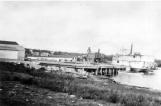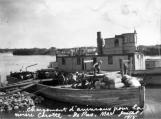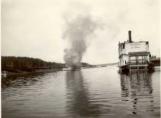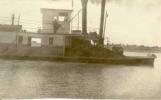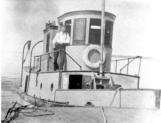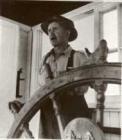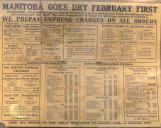1
The Steamboat EraBy the early 1870s the York boat was replaced by large, Mississippi-style paddlewheel steamboats as the main mode of transportation on the Saskatchewan River. The paddlewheelers were faster, considerably larger, and more economical to operate than the York boat.
The Pas was an important fuelling spot and stopover for vessels plying the Saskatchewan River from Grand Rapids to Cumberland House and beyond to as far as Fort Edmonton. During this period the shoreline of the river at The Pas was packed with docks, warehouses and boats, and bustled with commercial activity throughout the open water season.
5
A variety of boats plied the Saskatchewan River during the steamboat era. The first steamboats were those owned by or hauling for the Hudson's Bay Company.The Ross Navigation Company was the largest maritime enterprise in The Pas. Some of the vessels built by Captain Horatio Ross included The Pas, the Brisbin, the Notin, the Tobin, and the Nipawin.
The Finger Lumber Company and then its successor The Pas Lumber Company also had a fleet of river steamers, including the sidewheeler C.R. Smith, and sternwheelers The Jack Winton, and later, the 120-foot David N. Winton. The David N. Winton was the last steamboat to ply the waters of the Saskatchewan River in the area of The Pas, being sunk by the action of river ice in 1954.
9
Riverboat travel was rife with challenge for the boat captains and their crews. The major rapids at Grand Rapids, where the Saskatchewan River tumbles 24 metres in 5 kilometres as it empties into Lake Winnipeg, required a rail portage, over which freight and passengers were transferred from a lake boat to a riverboat for the upriver trip.At many other locations the boats had to ascend smaller rapids using a technique called "warping". Two spars were set in the river bottom and inclined to the bow. A tackle block was attached to each spar with a hawser (cable) that ran to a capstan and the close gunwale. With the engine running, the capstan was turned and the boat was literally lifted over the obstacle in successive "hops".

